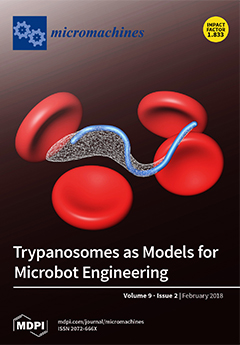The relationship between the current through an electronic device and the voltage across its terminals is a current–voltage characteristic (
I–
V) that determine basic device performance. Currently,
I–
V measurement on a single-molecule scale can be performed using break
[...] Read more.
The relationship between the current through an electronic device and the voltage across its terminals is a current–voltage characteristic (
I–
V) that determine basic device performance. Currently,
I–
V measurement on a single-molecule scale can be performed using break junction technique, where a single molecule junction can be prepared by trapping a single molecule into a nanogap between metal electrodes. The single-molecule
I–
Vs provide not only the device performance, but also reflect information on energy dispersion of the electronic state and the electron-molecular vibration coupling in the junction. This mini review focuses on recent representative studies on
I–
Vs of the single molecule junctions that cover investigation on the single-molecule diode property, the molecular vibration, and the electronic structure as a form of transmission probability, and electronic density of states, including the spin state of the single-molecule junctions. In addition, thermoelectronic measurements based on
I–
Vs and identification of the charged carriers (i.e., electrons or holes) are presented. The analysis in the single-molecule
I–
Vs provides fundamental and essential information for a better understanding of the single-molecule science, and puts the single molecule junction to more practical use in molecular devices.
Full article






